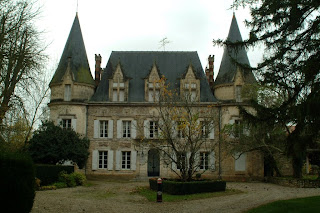 London UK
London UK - THE new 2008 Demolition Protocol was launched at the Institute of Civil Engineers in Westminster on 30 October by author Brian Menzies of the Enscape consultancy. This follows the 2003 version and shifts the emphasis away from recycling - crushing bricks and chipping wood - towards reclamation and reuse which saves embodied energy and carbon emissions.
The 2003 demolition protocol was a recycler's charter. But the new protocol recognises the EU Waste Framework Directive which now states that reuse must be considered as a priority order over recycling. Rather than simply commending reuse, the new directive requires reuse and a failure to reuse will need to be justified on environmental grounds.
At the launch the demolition sector was described as one of the UK's most innovative, a tribute which Terry Quarmby, president of the Institute of Demolition Engineers, warmly welcomed.
There was a brief discussion after the launch presentation during which the most common theme was how important it was for the client to be on board if reuse was to be achieved.
Some points by Thornton Kay of Salvo who was at the launch:
1. Consumer and SME participation in the demolition protocol - 90 per cent of current reclaimed materials reuse is outside mainstream construction by private homeowners and small commercial reusers.
2. Big contractors are responsible for the supply of most reclaimed materials, but small businesses and private individuals are responsible for reuse. This mismatch results in mainstream construction frequently destroying materials while claiming there is no demand for them, even though they can be highly sought after outside the mainstream construction sector.
3. Supply lines are increasing in length and the quantities of materials are decreasing in volume. This finding from the BigREc Survey is due to be published in December 2008. This resulted in shrinking reclaimed supplies into a buoyant salvage sector, which in turn has now shrunk the sector. It has also resulted in reclaimed materials being sought in other countries, or new materials being substituted for old in salvage yards during the past ten years.
4. No mention was made at the launch or in the protocol of some of the regulatory obstructions to reuse, such as the EU Construction Products Directive and issues of quality and liability.
5. We concur fully with the need for reuse to be client-led especially within mainstream construction. If the client is keen on saving materials from demolition then contractors will comply. Equally if materials are to be reused within newbuild or refurbishment projects it is the client who must positively instigate this, and then the professional and contracting teams will fall into line and reuse will be a certainty. Without client support reuse is usually a step too far in an increasingly complex and highly-regulated construction world.
ICE explanatory leafletICE Demolition Protocol 2008ICE: Press statement
------------
Mr Nigel Mattravers, Chairman of the ICE Waste and Resources Management Board, said: "Issues of cost and environmental sustainability can make managing buildings and structures at the end of their lives a complex job. The best decisions are made pro-actively, and the updated Protocol will enable policy-makers, clients, and agencies to better assess how they might re-use buildings, structures, elements, and products prior to demolition and recycling. The Protocol prioritises the need to re-use, then recycle, with landfill always as a last resort."
The Protocol has been widely adopted, since its launch in 2003, by a range of public and private sector projects, and is supported by WRAP (Waste & Resources Action Programme) through its inclusion in WRAP's step-by-step guide for the efficient use of materials in regeneration projects. It is now a common requirement within planning policy, tenders, contracts and voluntary agreements. It can also contribute to the provision of Site Waste Management Plans.
Dr Mervyn Jones, Construction Programme Manager at WRAP, said: "We are delighted to be supporting the ICE Demolition Protocol 2008. The last five years have seen an industry shift towards considering materials and resource efficiency from the outset. The updated Protocol communicates good practice in a clear and user friendly format and will go a long way towards enabling its users to make the most cost-effective and environmentally sound decisions from day one."
The 2008 protocol
- Explains the role of policy-makers and the client team in delivering cost benefits, by adopting the Protocol
- Ensures that the principles of the waste hierarchy are adopted in the decision-making process for evaluating buildings, the fit out materials and structures
- Offers a process-driven approach to setting targets for deconstruction, reclamation and reuse
- Provides a Deconstruction/Demolition Recovery Index (DRI) - this is the percentage of building elements, products or materials to be reused or recycled
- Estimates bulk quantities through a pre-demolition audit, summarised in a Demolition Bill of Quantities (D-BOQ)
- Provides a new build recovery index (NBRI) - describing the percentage of building elements, products or materials recovered for use in the new build
- Demonstrates compliance with Site Waste Management Plan requirements
- Describes how carbon benefits, through avoided haulage movements, can be realised and estimated easily
- Provides data for in-house and local authority monitoring of annual construction and demolition waste arisings


















